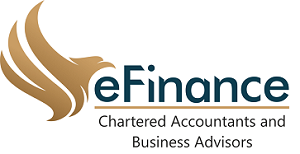The COVID-19 pandemic has reshaped the way we work, accelerating the adoption of remote and flexible work arrangements. As organizations navigate this new normal, they’re discovering the immense value in harnessing the strengths of multigenerational teams. These teams, composed of individuals from different age groups, bring a wealth of perspectives, skills, and experiences. However, ensuring productivity in such teams requires a thoughtful approach. In this article, we’ll explore how to create productive multigenerational teams in the post-COVID era.
How to create productive multigenerational teams post-covid?
1. Leverage the Strengths of Each Generation
Every generation, from Baby Boomers to Gen Z, brings unique strengths to the table. Baby Boomers may offer valuable experience and a strong work ethic, while Gen Xers often excel at adaptability and problem-solving. Millennials and Gen Z tend to be tech-savvy and innovative. Recognize and harness these strengths when forming teams to ensure a well-rounded skills set.
2. Embrace Technology and Flexibility
COVID-19 has accelerated the integration of technology into the workplace. Embrace this trend by providing training and tools to all generations, ensuring they can collaborate seamlessly in a digital environment. Additionally, continue offering flexible work arrangements that cater to the needs of different generations, whether it’s remote work options or flexible hours.
3. Promote Cross-Generational Mentorship
Foster a culture of learning and mentorship within your organization. Encourage older team members to mentor younger ones and vice versa. This not only helps bridge generation gaps but also promotes knowledge sharing and professional growth.
4. Clear Communication is Key
Effective communication is essential in any team, especially multigenerational ones. Recognize that different generations may have varying communication preferences. Some might prefer face-to-face meetings, while others may be more comfortable with digital channels. Be inclusive, providing options that accommodate everyone’s communication style.
5. Encourage Collaboration and Idea Sharing
Create platforms and spaces where team members can freely share ideas and collaborate on projects. Encourage brainstorming sessions, team-building activities, and open forums for discussion. By promoting a culture of collaboration, you tap into the collective creativity of your multigenerational team. You can do it with the help of remote PC monitoring software.
6. Establish Common Goals and Values
Align your team around common goals and values. This sense of purpose unites individuals from different generations, fostering a cohesive and productive environment. When everyone understands the larger mission, they’re more motivated to work together toward its achievement.
7. Respecting Diverse Perspectives
Different generations may have contrasting viewpoints on various matters. Encourage respectful discussions that consider these diverse perspectives. A culture of respect and inclusivity not only boosts productivity but also creates a positive work
environment.
8. Provide Learning Opportunities
Offer continuous learning opportunities for all generations. Whether it’s workshops, online courses, or access to industry conferences, investing in professional development benefits both individuals and the organization. It keeps skills sharp, encourages innovation, and enhances overall team performance.
9. Recognize and Celebrate Achievements
Acknowledge the contributions of your multigenerational team members. Celebrate achievements, milestones, and personal growth. This recognition boosts morale and creates a sense of unity within the team.
10. Stay Adaptable and Evolve
The post-COVID era is still unfolding, and the dynamics of work continue to change. Stay adaptable, be open to feedback, and evolve your approach to suit the evolving needs of your multigenerational team.
Final words
By following these strategies, you can harness the power of multigenerational teams, creating an environment where diverse perspectives and skills not only coexist but thrive, leading to increased productivity, innovation, and overall success for your organization in the post-pandemic world






